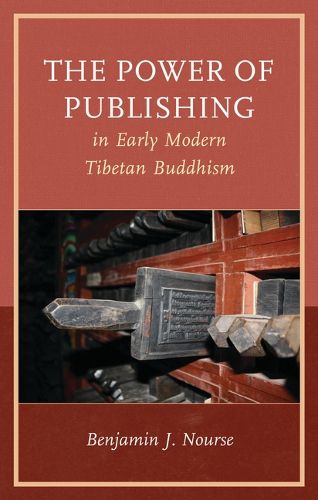Readings Newsletter
Become a Readings Member to make your shopping experience even easier.
Sign in or sign up for free!
You’re not far away from qualifying for FREE standard shipping within Australia
You’ve qualified for FREE standard shipping within Australia
The cart is loading…






The Power of Publishing in Early Modern Tibetan Buddhism explores the historical and religious dynamics that led to the "golden age" of Tibetan printing in the late seventeenth and eighteenth centuries, when Tibetan woodblock publishing reached its zenith. By tracing the publication and circulation of Tibetan books in early modern Asia, from the Fifth Dalai Lama's Potala Palace in Lhasa, through cosmopolitan Qing Beijing, and into monastic colleges on the Sino-Tibetan borderlands, this book demonstrates how woodblock publishing helped shape the religious and political landscapes of Tibet, Mongolia, and China into the twentieth century. Intertwined with this larger historical narrative, this volume explores the meaning and purpose of books in early modern Tibetan Buddhist cultures, especially the role of Mahayana Buddhist ideas as a driving force behind both the growth of woodblock publishing at that time and the use of Tibetan Buddhist books for a variety of activities, including scholarship, exchange, ritual, and a wide range of reading practices.
$9.00 standard shipping within Australia
FREE standard shipping within Australia for orders over $100.00
Express & International shipping calculated at checkout
The Power of Publishing in Early Modern Tibetan Buddhism explores the historical and religious dynamics that led to the "golden age" of Tibetan printing in the late seventeenth and eighteenth centuries, when Tibetan woodblock publishing reached its zenith. By tracing the publication and circulation of Tibetan books in early modern Asia, from the Fifth Dalai Lama's Potala Palace in Lhasa, through cosmopolitan Qing Beijing, and into monastic colleges on the Sino-Tibetan borderlands, this book demonstrates how woodblock publishing helped shape the religious and political landscapes of Tibet, Mongolia, and China into the twentieth century. Intertwined with this larger historical narrative, this volume explores the meaning and purpose of books in early modern Tibetan Buddhist cultures, especially the role of Mahayana Buddhist ideas as a driving force behind both the growth of woodblock publishing at that time and the use of Tibetan Buddhist books for a variety of activities, including scholarship, exchange, ritual, and a wide range of reading practices.